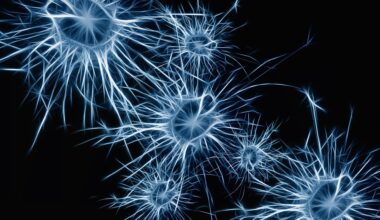It was nearly two years into one of her projects that Dr. Lin Luo (pictured) realized something wasn’t right. She had been using the Cre-loxP system—an approach frequently used to knock out gene expression in specific cell types in mice and other animals—to study functions of the Calsyntenin-3 protein. After months of troubleshooting, she realized the gene wasn’t just being knocked out in specific brain tissues as she had hoped. Instead, every tissue in the mouse—from head to tail—was losing the gene.
At this point she had conducted many experiments, all of which were deemed invalid because the exact genotypes of the mice she had been working with were unknown since she wasn’t aware that this tissue-wide knockout was happening. But she was curious. Did other scientists using the Cre-loxP system know about its shortcomings?
Dr. Luo scoured over thousands of papers, as well as her own results, to put together evidence of the challenges in using the Cre-loxP system. Her analysis was published today in the journal Neuron.
“I basically had to trash everything I had worked on and my supervisor and I decided that this issue was important enough that we would collect as much information as we could and publish it in one research paper,” says Dr. Luo, who was a PhD student in Dr. Ann Marie Craig’s laboratory at the Djavad Mowafghian Centre for Brain Health (DMCBH) at the time.
The Cre-loxP system uses Cre—an enzyme that cuts out genetic sequences between two loxP sites—and loxP, a unique site containing 34 base pairs. The Cre enzyme is driven by a specific promoter which determines where in the organism the loxP-modified gene will be cut. For example, a Cre line that is driven by a brain-specific promoter should (in theory) express Cre only in brain tissues. But as Dr. Luo found out, this isn’t always the case and Cre can be expressed in off-target tissues.
“Dr. Luo took a difficult situation and turned it around—her story could be taken as a lesson on going where the science leads,” says Dr. Craig. “We were also fortunate to have encouragement from the local community, particularly the Dynamic Brain Circuits Cluster at DMCBH and Dr. Elizabeth Simpson at the Centre for Molecular Medicine and Therapeutics (CMMT), and the ready collaboration of numerous international colleagues.”
The resulting paper is focused specifically on germline recombination, a process whereby genes are unintentionally knocked out in sperm or oocytes and are therefore passed onto offspring. Dr. Luo analyzed 64 different Cre lines and found many instances where problems can arise, all of which are outlined in the paper. For example, results differ depending on whether it’s the mother or the father who pass on the Cre.
“When we got our mice, the instructions suggested using the Cre from the father because it would help to reduce the risk of germline recombination, but I found that to not always be true,” says Dr. Luo. “That’s really more of a general recommendation.”
In the end, Dr. Luo collected data from 27 labs worldwide spanning seven different countries, to determine the inefficiencies around the Cre-loxP system, and concluded that unintentional germline recombination can be difficult to predict and happens more often than people realize.
“As it turned out, I think Dr. Luo’s study is far more significant than most of our studies on single genes like Calsyntenin-3,” says Dr. Craig. “Her study has implications for thousands of ongoing investigations, for any research involving genetic systems using Cre and other site-specific recombinases in mice, fish, and other model organisms in any field of health research. By raising awareness of a key caveat and providing collated data, Dr. Luo’s study will help other scientists to design the most efficient experiments going forward.”
The intention of the paper is for scientists to use it as a reference point—somewhat like a one-stop-shop for information on the Cre-loxP system—to aid researchers globally. Dr. Luo says their findings will also be incorporated into the Mouse Genome Informatics (MGI) international database in order to be as wide-reaching as possible.
“Time and resources are being wasted by not knowing about this,” says Dr. Luo. “Cre-loxP is very powerful and we don’t suggest not using it, but the pros and cons of every possible genetic system needs to be weighed in order to decide which is best to use, and of course, people can now refer to our paper for recommendations.”


